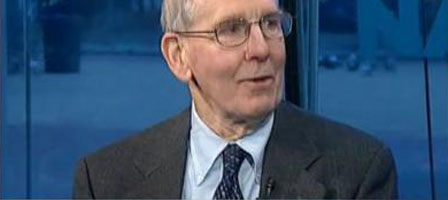Ten investments to buy
Here are the ten investment categories that Shilling favours for the long term:
• Treasuries and other high-quality bonds. He sees yields on longdated Treasuries (now about 4.7 per cent) falling to or below 3 per cent, delivering significant capital appreciation. The longer-dated the bond, the greater the appreciation.
If the market value of a 30-year Treasury currently yielding 4.7 per cent were to move to a yield of 3 per cent over two years, that would deliver a combined capital gain if realized at that point, plus interest income, of nearly 42 per cent over the period (my figures, not Shilling’s).
• Other income-producing securities such as the stocks of utilities, consumer product companies, healthcare firms, and others that pay meaningful dividends that are likely to rise.
Businesses that pay meaningful dividends are lower-risk because they’re sending a message that they’re generating the real earnings and cash flow needed to finance the dividend cheques, and they will almost certainly continue to be run in a prudent and stable manner.
“The only known return on equity investments is dividends… The rest are hopes and promises.”
Shilling notes: “Another reason that dividend-paying stocks are likely to be popular in coming years is a change in attitude by institutional investors, especially endowments and pension funds,” because they got so burned by the collapse in values of alternative assets in the 2008 crisis.
• Producers and distributors of food and other consumer staples. Basic essentials continue to be bought in bad times as well as good, with a shift towards cheaper “value” products. Deflation cuts, or makes it easier to cut, business costs.
• Suppliers of small luxuries. “Consumers, especially when they’re hard-pressed, tend to buy the very best of what they can afford, even if it’s within a low-priced category.” Top brands introduce lower-cost versions of their designer styles.
Invest in paper with pictures of dead presidents
• The US dollar (relative to other currencies). Crises everywhere else drive investors into the greenback. It’s the global safe haven. It will remain the world’s reserve currency for the foreseeable future.
Other alternatives, such as the euro, are vulnerable. Gold is too narrow a market. Sluggish growth and deflation will be tougher on other economies and therefore their currencies than on America’s.
• Investment advisers and financial planners. They “should be in strong demand in the years ahead” as “low investment returns will discourage do-it-yourself investing and encourage the use of professionals.”
• Factory-built housing and rental apartments. With homes no longer viewed as investments, this will favour smaller and much cheaper factory-built dwellings, and families will increasingly prefer renting to ownership.
• Healthcare. “Explosive growth” is almost guaranteed because of ageing populations, and it will be favoured by government job-creation programmes.
There will be “long-run winners among those that promote cost containment, such as diagnostic testing labs and diagnostic equipment makers, outfits that provide home healthcare services and supplies, and outpatient services and clinics.”
• Productivity enhancers. In a deflationary environment, “increased profits through price and volume increases will be difficult for many firms… Labour cost-cutting has been in vogue lately, but does have its limits. So anything… that helps customers to reduce costs and promote productivity will be in demand.
“Ironically, the very technologies that will continue to increase over-supply and promote deflation – computers, semiconductors, the internet, biotech and telecom – will be in demand to help combat its effects.”
Cost-cutting can also come from low-tech sources such as outsourcing of call centres and routine medical and legal work (using infotech), and temporary labour agencies.
• North American energy. Concern in the US over dependence on imports from unstable countries will lead to promotion of local sources, despite their relatively high cost. Shilling likes regional producers of oil, gas and coal, the Canadian oil sands, liquefaction of gas, nuclear power. But “renewable energy sources such as ethanol, wind farms, solar and geothermal all require heavy government subsidies that strike me as unreliable.”
Because I am not as pessimistic as Shilling, I don’t agree with all his conclusions. For example, I think he is too negative on China and other emerging economies, and therefore on the outlook for commodities.
Nevertheless, his book is packed with a lot of examples of how economies really work – so often in ways different from conventional opinion – and useful ideas about where to invest in the “new normal” environment.
* The Age of Deleveraging by A Gary Shilling, pub. by John Wiley & Sons. $39.95. ISBN 978-0-470-59636-4.
CopyRight – OnTarget March 2011 by Martin Spring
This article followed on from – 12 investments to sell or avoid
and is part of the series starting with – Survive and Prosper in the Grim Decade
• A surfeit of leading-edge production plants
• Prediction: unemployment to continue rising







